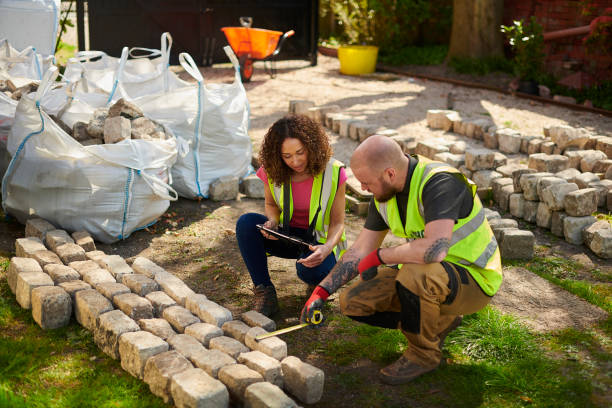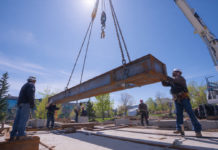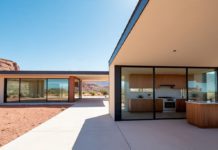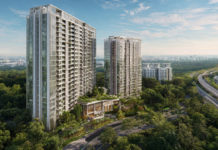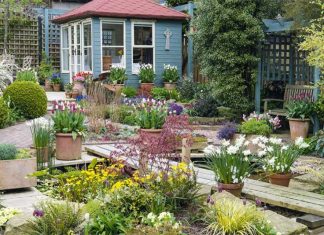Public spaces are designed for community enjoyment, but they also face constant wear from foot traffic, weather, and general use. For councils, developers, and contractors, the true challenge of building these spaces lies not just in their initial construction, but in ensuring they remain functional and attractive over the long term. Maintenance-ready construction is an approach that considers the lifecycle of a space from the outset, incorporating design features, materials, and systems that reduce the ongoing burden of upkeep.
The Principles of Maintenance-Ready Design
At the heart of maintenance-ready construction is the concept of whole-of-life planning. Instead of focusing solely on immediate delivery, project teams evaluate how design and material decisions will impact upkeep requirements over decades. A forward-thinking landscape construction company considers not just how a space looks on completion, but also how it will perform and endure under daily use.
Three guiding principles shape this approach:
- Durability – Selecting robust materials and finishes that can withstand weather and heavy use.
- Accessibility – Ensuring spaces are easy to clean, repair, and maintain without excessive disruption.
- Sustainability – Incorporating systems that reduce water, energy, and chemical usage over the life of the asset.
Choosing Materials that Last
Selecting materials for durability is key to reducing future maintenance. Durability should be a consideration in all choices related to pavement, furniture, and retaining structures. Choices include:
- Anti-graffiti coatings – Protective clear coatings applied to walls, seats, and shelters allow paint or marker removal without damage to the substrate. This can reduce cleaning costs and lost time.
- Concrete and stone finishes – Natural stone or exposed aggregate concrete should be selected where appropriate, rather than surfaces that require periodic repainting.
- Metalwork with powder-coated finishes – Powder coating has better resistance to chipping and corrosion than conventional paint finishes. It can be used on railings, fencing, and shelters to help extend life.
Each of these material choices may have higher initial costs, but in most cases, the reduced repainting, resurfacing, and replacement can provide savings.
Green Spaces Designed for Efficiency
Vegetation is one of the most valued features of public spaces, but it can also represent a major maintenance expense if not carefully designed. Plant selection, soil preparation, and irrigation planning must all be considered early in the construction phase.
- Low-growth planting zones – Using species that naturally maintain a compact form reduces the frequency of trimming and pruning. Selecting drought-resistant plants further decreases irrigation requirements.
- Mulching and groundcovers – Applying mulch or using hardy groundcovers suppresses weeds, retains soil moisture, and enhances soil health.
- Irrigation-integrated retaining systems – Retaining walls that incorporate drip irrigation channels or water reservoirs make it easier to maintain healthy plants while reducing water waste.
By integrating these strategies, project teams ensure that green spaces remain vibrant without placing excessive demands on landscape maintenance services.
Smart Water and Drainage Systems
Water management is another critical factor in maintenance-ready construction. Poorly designed drainage can lead to erosion, flooding, or the premature deterioration of pavements and structures.
- Permeable pavements allow rainwater to filter through, reducing surface runoff and easing the load on stormwater infrastructure.
- Automated irrigation systems with smart controllers adjust watering schedules based on rainfall and evaporation rates, cutting down on manual oversight.
- Rain gardens and bioswales not only improve stormwater quality but also reduce the need for extensive underground drainage works.
These systems combine environmental sustainability with reduced long-term maintenance needs.
Designing for Easy Access and Cleaning
Public spaces are only as maintainable as their accessibility allows. A good design ensures maintenance crews can clean, repair, or service infrastructure without excessive disruption.
- Modular construction elements – Seating, shade structures, and bins built in modules allow for easy replacement of damaged components rather than full reconstruction.
- Accessible service zones – Designing hidden access points for irrigation controls, electrical systems, and lighting reduces the time required for routine checks.
- Surface gradients and layouts – Thoughtful grading prevents pooling water, which can damage pavements and increase cleaning requirements.
These approaches reduce labour demands and extend the usable life of facilities.
Integrating Technology into Maintenance-Ready Spaces
Emerging technologies are reshaping the way public spaces are maintained, with opportunities to embed smart systems directly into construction. Examples include:
- Sensor-driven lighting that adjusts based on usage patterns, reducing energy costs and bulb replacements.
- Automated monitoring systems for irrigation networks, detecting leaks before they cause damage.
- Digital asset management tools that track maintenance schedules and flag when components are approaching end-of-life.
By embedding these systems at the construction stage, public assets can be monitored and managed with greater efficiency.
The Role of Collaboration
Maintenance-ready construction requires collaboration between designers, engineers, contractors, and facility managers. Too often, decisions about materials and systems are made without consulting those who will be responsible for long-term upkeep. Successful projects foster collaboration from day one, ensuring that practical knowledge of maintenance realities informs design and construction.
Public sector clients are increasingly demanding landscape construction solutions that reflect not just initial cost but lifecycle performance. Contractors who deliver on this expectation not only enhance the durability of public spaces but also build stronger reputations for innovation and responsibility.
Public spaces are community assets that must withstand constant use and environmental stress. Building them to be maintenance-ready ensures they remain safe, attractive, and functional without placing an excessive financial or operational burden on councils and service providers.
Through careful material selection, efficient planting strategies, smart water systems, and accessible design, contractors can greatly reduce long-term upkeep needs. When combined with emerging technology and strong collaboration, these principles set the stage for public spaces that deliver lasting value.
For contractors and clients alike, investing in maintenance-ready construction is not just a cost-saving strategy—it is a commitment to sustainable, resilient spaces that support communities for decades to come.
